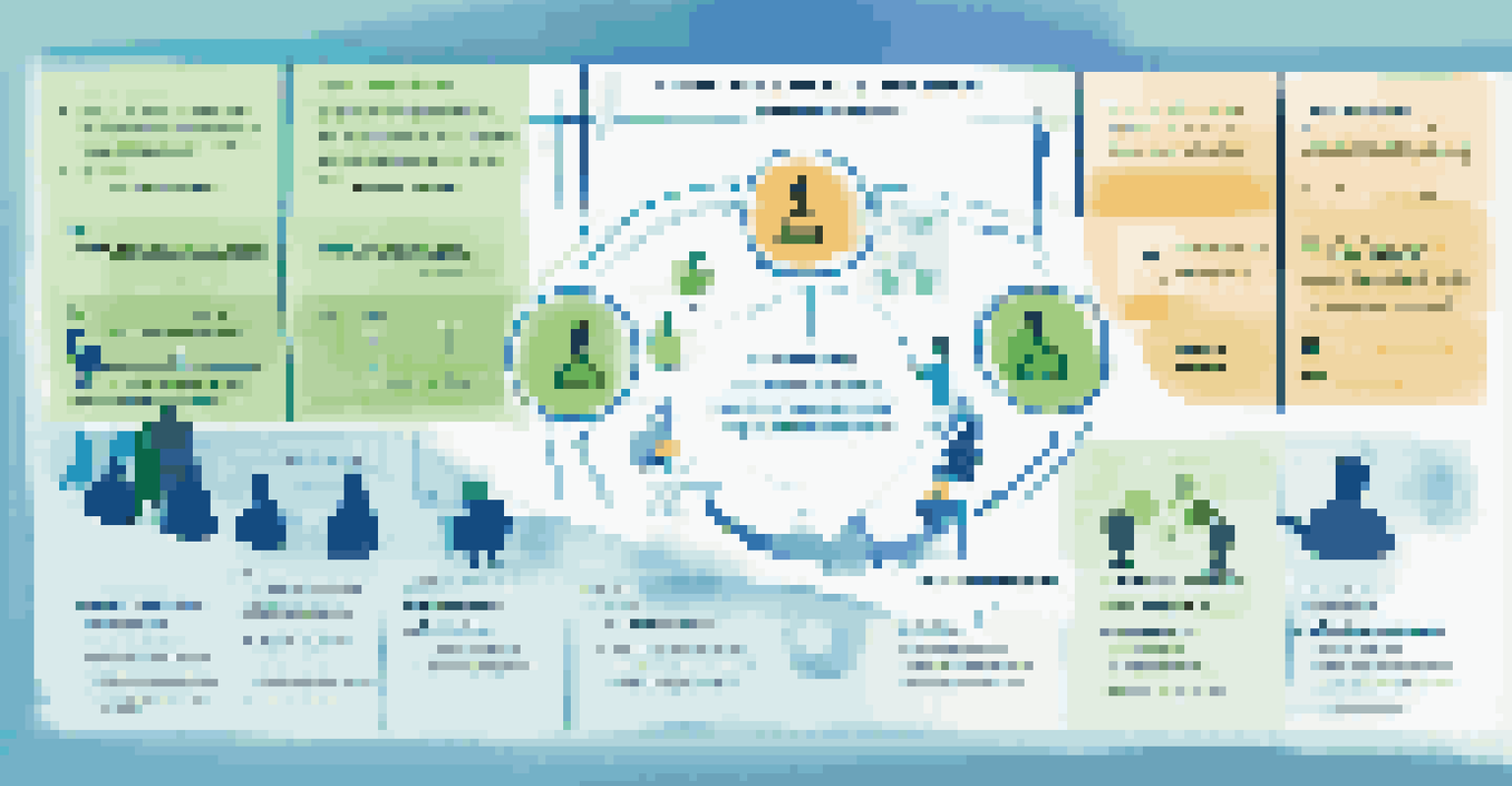Agile Retrospectives: Enhancing Team Performance and Growth

Understanding the Purpose of Agile Retrospectives
Agile retrospectives serve as a crucial checkpoint for teams, allowing them to reflect on their recent work. The main goal is to identify what went well, what didn’t, and how processes can be improved. This reflection fosters a culture of continuous improvement and learning, making it easier for teams to adapt and thrive.
The greatest danger in times of turbulence is not the turbulence; it is to act with yesterday’s logic.
During these sessions, team members share their perspectives in a safe environment, encouraging open dialogue. This transparency not only builds trust but also strengthens collaboration among team members. Ultimately, retrospectives help teams become more aligned and focused on their shared goals.
By regularly engaging in retrospectives, teams can identify patterns in their workflow and address any recurring issues. This ongoing process of evaluation ensures that the team is not only moving forward but is also growing in its capabilities and efficiencies.
The Structure of an Effective Retrospective
An effective retrospective typically follows a structured format that encourages participation and engagement. Commonly, teams start with a set agenda that includes reviewing previous action items, discussing successes, and identifying areas for improvement. This structure helps keep the discussion focused and productive.

Many teams utilize frameworks such as Start-Stop-Continue, which encourages members to suggest practices to start doing, stop doing, and continue doing. This simple yet effective method allows for clarity and prioritization of actions. By using clear frameworks, everyone can contribute meaningfully without feeling overwhelmed.
Agile Retrospectives Foster Growth
These sessions encourage teams to reflect on their work, leading to continuous improvement and alignment towards shared goals.
Furthermore, it’s essential to allocate enough time for each segment of the retrospective. Rushing through discussions can lead to superficial insights, while allowing ample time encourages deeper exploration of issues. This balance is key to maximizing the effectiveness of the retrospective.
Creating a Safe Environment for Feedback
A cornerstone of successful retrospectives is fostering a safe space where team members feel comfortable sharing their thoughts. This means establishing ground rules that promote respect and confidentiality during discussions. When team members trust that their input is valued, they are more likely to speak candidly.
Feedback is the breakfast of champions.
Encouraging honesty can sometimes be challenging, especially if team dynamics are strained. Leaders can model vulnerability by sharing their own experiences and mistakes, which can help break down barriers. This sets a tone of openness that invites others to participate without fear of judgment.
Additionally, using anonymous feedback tools can also help gather honest insights from team members who might be hesitant to speak up. By combining these approaches, teams can cultivate a culture of trust and continuous improvement, which is vital for overall performance.
Identifying Actionable Insights from Discussions
One of the most valuable outcomes of a retrospective is the identification of actionable insights that can drive improvement. However, it’s important to ensure that each insight discussed is specific and feasible. This clarity helps the team understand what steps they can take to enhance their processes moving forward.
To facilitate this, teams can use techniques such as the 'Five Whys' to dig deeper into the root causes of issues. By asking 'why' multiple times, teams can uncover underlying problems rather than just addressing symptoms. This approach promotes a more thorough understanding of challenges faced.
Create a Safe Feedback Environment
Establishing trust and respect during discussions allows team members to share insights candidly, enhancing collaboration.
Finally, documenting these insights and assigning responsibilities for follow-up actions is crucial. This accountability ensures that discussions lead to tangible results, and team members can track progress over time. It’s all about turning reflections into real improvements.
Incorporating Team Member Perspectives
Diversity of thought within a team can lead to richer discussions during retrospectives. Encouraging input from all team members ensures that different viewpoints are considered, which can highlight issues that may have been overlooked. This variety can lead to more comprehensive solutions and innovations.
To promote participation, leaders can implement techniques like round-robin sharing or breakout discussions, allowing everyone a chance to voice their opinions. This not only fosters inclusion but also empowers quieter team members to contribute, ensuring a more balanced dialogue.
Moreover, recognizing and validating contributions from all team members can enhance engagement. When individuals feel their perspectives are valued, they are more likely to participate actively in future retrospectives, contributing to a cycle of continuous improvement.
Leveraging Technology for Remote Retrospectives
In today’s digital landscape, many teams are working remotely, making it essential to adapt retrospectives to virtual formats. Utilizing video conferencing tools and collaborative platforms can help facilitate meaningful discussions, even when team members are miles apart. Ensuring everyone has access to technology is key to inclusivity.
Additionally, online whiteboards and project management tools can enhance engagement during virtual retrospectives. These platforms allow team members to visually map out ideas, vote on priorities, and track action items in real time, making the process interactive and dynamic.
Leverage Technology for Engagement
Utilizing digital tools ensures effective retrospectives in remote settings, maintaining engagement and inclusivity.
While the medium may change, the core principles of retrospectives remain the same. Teams should focus on creating an engaging environment, regardless of whether they are meeting in person or online, to ensure they continue to grow and improve together.
Measuring the Impact of Retrospectives on Team Performance
To truly understand the effectiveness of retrospectives, teams should consider how to measure their impact on performance. This can involve setting specific metrics, such as tracking the number of action items completed or assessing team morale over time. By quantifying improvements, teams can see the tangible benefits of their efforts.
Another approach is to conduct periodic surveys or check-ins to gauge team satisfaction and engagement levels. These insights can provide valuable feedback on how retrospectives are perceived and whether they are yielding the desired results. Regular assessment allows teams to refine their approach accordingly.

Ultimately, the goal is to create a feedback loop where insights from retrospectives directly inform team dynamics and performance. By measuring outcomes and making adjustments, teams can ensure that retrospectives remain a powerful tool for growth and success.